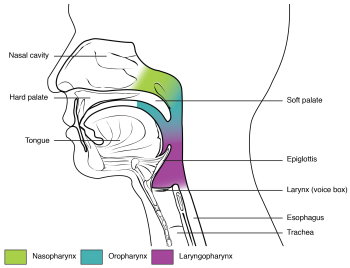 Following on from Issue 35, we continue our series on how Neuroacanthocytosis (NA) can affect speech and what can be done. In this part we will focus on specific ways to work with speech as well as ways to protect communication overall.
Following on from Issue 35, we continue our series on how Neuroacanthocytosis (NA) can affect speech and what can be done. In this part we will focus on specific ways to work with speech as well as ways to protect communication overall.
There are three main subsystems of speech that we work with: phonation (voice), articulation and prosody (melody of speech or intonation).
Voice is linked to our personality. Variations in pitch and volume and timbre are what gives our voice its character. With NA volume can either be reduced or have unpredictable bursts of loudness. Voice exercises aim at strengthening the voice and getting as much of its character back. Singing can be a great gateway through to voice work, even simple tunes like “Happy Birthday”, or “you are my sunshine”. In case of tight/strained voice we may need to work on relaxing the voice through yawn-sign (it relaxes the pharyngeal wall!), or other techniques.
Articulation can be a major part of our work. Depending on the number of face muscles affected by NA and the degree they respond to exercising, we can choose to work on those that can deliver the maximum effect for minimum effort. Working on lip sounds (like /p/b/) can usually be the most effective way to improve (see examples from Alex Irvine below). The tongue controls the majority of the sounds in our Indo-European languages and it can be affected by NA. For example, /k/ and /g/ sounds require the back of the tongue to raise to the palate and the /t/d/ sounds need the tongue tip to move up to the front teeth. We never think about the amount of precise and well co-ordinated movements required for speech and evidently, we produce 180 sounds per minute.
Maintaining the personal intonation or rhythm of speech is a major aspect of communication, as it conveys most of our intended meaning. In George Bernard Shaw, Eliza Doolittle’s Cockney accent becomes the central narrative of the play, in the assumption that transforming her accent will give her middle-class respectability. In therapy we often aim at unravelling the individual accent as opposed to changing it or suppressing it. The most useful way of working on intonation is through asking questions, or practicing anything that has a lot of exclamation points! Vowels also play a big part in intonation and accent: think of the way you pronounce “scone”: is it more like “stone” or “gone”? There is a “UK scone App” plotting scones’ pronunciation across the British Isles!
Poetry has a big place in our work as it can link the rhythm of a language, the breath groups, sounds and images, even memories from childhood.
When working on speech one needs to take into account not just the muscles of the face and trunk involved but also the age of onset of the disease and the particular timing of intervention: there are no studies to show when it is more effective to have therapy input. It is often the case that clinically “the earlier the better”, not just for the particular speech issue but for nurturing and supporting communication as a whole. Continuing to participate in as many activities and life roles as before the diagnosis for as long as possible is the ultimate aim of any intervention. For example, adjustments at work may include the use of a voice amplifier. Another recent development is “voice banking”, (see for example Acapela.com), a way to synthesise and store one’s voice early on in the disease process and use it later on through the “type-to-speech” devices. Any use of communication aid requires support and training of the family and friends.
The rare and disperse nature of the disease presents practical challenges for both the clinician and the patient/families involved. The clinician must work in a team, not just to share knowledge but to maximise all aspects of functioning and to allow communication to happen. A systematic, longitudinal approach to describing communication changes throughout the disease process is needed to support research into optimal treatment approaches and the incorporation of advancements in imaging and physiology for improvement in communication.
Examples of articulation exercises:
Pppppp/ and /bbbbbb/
- Please Paul, pause for applause.
- Peppercorn pudding and pelican pie
- Plain plump Pansy played picquet pleasantly
- The big baker bakes black bread
- “The bun is better buttered”, Billy muttered.
- The busy bee buzzed busily around the busy beehive.
- Big blue blisters bleeding badly
- Betty blue blows big black bubbles
VVVVV
- A vicarious veteran was bitten by a venomous snake
- Victoria was victimising a very vivacious Vivaldi.
- Violet voted various vets to be vetted.
- Vivian the vet visited the various vipers.
- The Viking were victorious at ending the violent war of Venetians.
The illustration above displays the “mid-sagittal view of the speech structures.”
Mid-sagittal view of the speech structures. The speech structures shown here are involved in breathing, articulation, resonance, voice and speech production. The speech structures include the tongue, jaw, lips, larynx, soft palate and pharynx.
From Barkmeier-Kraemer JM and Clark HH (2017). Speech-Language Pathology Evaluation and Management of Hyperkinetic disorders affecting speech and swallowing function. In Tremor and Other Hyperkinetic Movements.
References:
Barkmeier-Kraemer JM and Clark HH (2017). Speech-Language Pathology Evaluation and Management of Hyperkinetic disorders affecting speech and swallowing function. In Tremor and Other Hyperkinetic Movements.
Irvine G and Irvine G (2013). An Ultra-rare Disease? Where do we go from here? Tremor and Other Hyperkinetic Movement Disorders.
Peikert K, Danek A and Hermann A. (2018). Current state of knowledge in Chorea-Acanthocytosis as core Neuroacanthocytosis syndrome. European Journal of Medical Genetics, 61: 699-705.
Our thanks to Elina Tripoliti & Jacqueline McIntosh for continuing this series.